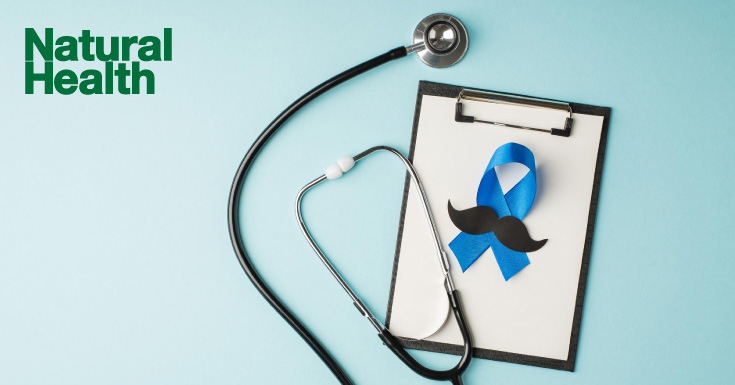What is the role of the prostate in the human body?
The prostate gland produces about 70% of the seminal fluid. This fluid from the prostate nourishes the sperm and provides lubrication for it. It is alkaline in nature.
How can you know if you have a healthy prostate?
Two aspects to this:
- Symptoms related to increasing size of the prostate: Urine flow, hesitancy, urgency, frequency, sensation of incomplete voiding, nocturnal (waking up at night frequently to pass urine), dribbling. Any permutation of these symptoms are related to Lower Urinary Tract Symptoms (LUTS). One of the causes of LUTS is an enlarged prostate that can be due to ageing (benign), infection/inflammation (prostatitis) or cancer of the prostate.
- Screening for prostate cancer. This is done by doing a Prostate Specific Antigen (PSA), a simple blood test that acts as a marker for prostate cancer. It is not an absolute test, but it does give the Urologist an idea of the possibility of prostate cancer in the patient, and thus allows discussion of options for further investigation and appropriate treatment.
What are the signs that something is wrong with your prostate?
As stated earlier, symptoms from an enlarged prostate tend to lead to problems with voiding (i.e. poor or reduced urine flow, hesitancy, sensation of incomplete voiding and dribbling) or storage symptoms (urgency, frequency, nocturnal) or a combination. In worst case scenarios, patients may present with sudden onset of acute urinary retention (the inability to pass urine), urinary infection or even hematuria (blood in the urine)
Furthermore, prostate cancers may also present with those similar symptoms and not have any other specific symptoms to suggest its presence. In extreme cases, patients with undiagnosed prostate cancer can present with loss of appetite, loss of weight and severe bone pain or sudden loss of power or sensation especially to the lower limbs (due to spread of undiagnosed prostate cancer to the skeletal bones of the spine causing fractures and spinal cord compression.
What are the common prostate diseases among Malaysian men?
The commonest prostate disease amongst Malaysian men is benign prostatic enlargement followed by prostate cancer. Of course, other prostate specific diseases include prostatitis (infection/inflammation of the prostate).
Which age group is most affected by prostate diseases? Any reason for that?
Depending on the cause of the prostate problem, there are certain age patterns of distribution. For example, benign enlarged prostates as well as prostate cancers tend to occur in older aged men (commonly after the age of 60). For infection and inflammation related conditions of the prostate (prostatitis), it can occur amongst younger men if there is a history of recurrent urinary infection due to other problems such as ureteral strictures or it can also occur in older men too.
What are the common lifestyle habits that affect prostate health?
Maintain a healthy diet – Low fat, and reduced red meat. Tomatoes are generally good for prostate health. Vegetables and fruits are anti-oxidants that help maintain good prostate health. Cook with olive oil, avoid trans-fat (that comes in many fast foods as well as non-home cooked food). Fish, chicken and poultry are acceptable.
Exercising regularly has been found to help men with their prostate health. It has been found that men who exercise regularly have less LUTS symptoms. Men with prostatitis also tend to show a marked symptomatic improvement and symptom free period with exercise. It’s also proven that exercise reduces the risk of erectile dysfunction (ED), a problem that can coexist with prostate problems.
Why is the prostate area very sensitive for men? (is it because it has more pain nerves than other parts of the body?)
The prostate itself is not a sensitive organ by nature. Pain and discomfort from the prostate tend to occur mainly during inflammatory processes related to infection or chronic inflammation suggestive of prostatitis. Even then, the symptoms tend to be of perineal discomfort rather than acute pain of the prostate. Prostatic obstruction of the urinary outflow can cause abdominal pain due to acute urinary retention.
Why should one go for prostate health screening?
The main instance for prostate health screening is to help identify the possibility of having prostate cancer at an earlier age. Depending on many factors, identifying prostate cancer early leads to a chance for a potential cure. In general, most prostate cancers are slow growing but unfortunately, there are no tests readily available to determine the more aggressive types. In the USA, they recommend men to go for prostate screening between the age of 55 and 69 especially if they have been well informed about the benefits and harms.
They do not recommend it for anyone above the age of 70. In Europe, the age is extended to 75. Again, these are arbitrary age cut-offs that a Urologist must sit discuss with the patient. A simple example is a healthy and fit 76-year-old male with no other medical diseases, who would be considered a suitable candidate for PSA screening, if the patient is keen for further treatment in case he has prostate cancer. Even certain younger men with strong family histories of prostate cancer (or even familial history of breast, ovarian or uterine cancers) may have to undergo screening at earlier ages of 40 and above if there is a suspicion of genetic mutations.
The downside of earlier screening are instances of picking up very low risk cancers in which instance, treating them may do more harm than just observing them. The process of detecting the cancers (i.e. prostate biopsies) are not without its inherent risks. These include bleeding (urination, rectal, spermatic) and infection. Though bleeding resolves spontaneously in most of the cases and infection is very uncommon, however, the risk still remains and must be considered in the shared decision making with patients during consultation with the Urologist.
Definitive treatment includes radical surgery (removing the whole prostate and seminal vesicles) or radiotherapy to the prostate gland. For more advanced cancers, these treatments forms the crux of the management, along with adjunct hormonal or chemotherapy. However, for low risk cancer patients, another option is active surveillance where the patient then undergoes close follow-up with blood tests (PSA) and examinations with the Urologists, and only get radical treatment if there is disease progression. Surgical treatment and radiotherapy have advanced over the last 20 years with new technology to improve outcomes, yet the risks of these procedures are still there (yet diminished) and include urinary incontinence, bladder and bowel dysfunction (due to radiation, including urgency, hematuria, rectal bleed) and erectile dysfunction.
How often should one go for screening?
A patient should go for a prostate health screening after discussing the benefits and harms with their treating Urologist. This should be done at least once (if they are agreeable). Depending on the PSA results, one can determine how often it needs to be repeated. An extremely low PSA may only necessitate a repeat PSA after 7-8 years as some reports have suggested. Again, it is dependent on individual factors and thus, decision making with your Urologist forms the crucial path in your eventual management plan.
 Dr Vijayan Manogran
Dr Vijayan Manogran
Consultant Urologist
Columbia Asia Hospital – Setapak


